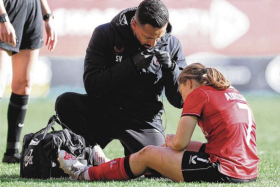Youth survives H1N1 horror with help from Ecmo system
He is one of 110 patients to have experienced the life support system at SGH since 2009
A highly anticipated post-examinations trip in December last year almost cost Mr Heng Wee Heng.
Towards the end of his 12-day tour of Europe, which took him and his oldest brother to France, the Netherlands and Belgium, Mr Heng, who had just completed his A-level exams, fell ill.
He was later diagnosed with H1N1 influenza and was suffering from severe respiratory failure.
The 20-year-old told The New Paper: "At the time, I thought it was just the usual flu, so I self-medicated and drank water, thinking it would go away after a few days."
His mother, Ms Tan Siew Noi, 55, said her son had started to turn purple, and was finding it difficult to breathe and move, and he required a wheelchair when he finally went to Khoo Teck Puat Hospital (KTPH).
Doctors at KTPH soon realised Mr Heng was failing to respond to the usual mechanical ventilation support, and was at risk of more complications, including multiple organ failure. His blood oxygen levels also continued to plunge to critical levels.
The decision was made to transfer Mr Heng to Singapore General Hospital (SGH), which had the extracorporeal membrane oxygenation (Ecmo) life support system.
Dr Phua Ghee Chee, head and senior consultant, Department of Respiratory and Critical Care Medicine at SGH, described the Ecmo as a life support machine that replaces the function of the heart and lungs, unlike the usual mechanical life support, which applies pressure and oxygen directly to the patient's lungs.
FURTHER DAMAGE
He explained that in Mr Heng's case, the high levels of pressure being exerted on Mr Heng's lungs could have caused further damage.
The Ecmo - which draws blood out of the patient through a major vessel, such as the vessels in either leg, and pumps it through an artificial lung - allows for lung rest while healing and recovery occurs.
However, Dr Phua said: "This is a form of life support, to buy time while the underlying condition is treated."
The technology was first rolled out in SGH for H1N1 patients in 2009, and has since been used on 110 patients, with increasing interest in recent years.
The hospital also provides a 24-hour on-call Ecmo physician.
The doctors revealed that while the survival rate of those who used the Ecmo hovered at about 60 per cent, improvements to the system in the past two years have seen an increase in survival rate to over 80 per cent.
Doctors stressed that the treatment is not for all patients and can pose risks including a stroke, infection and kidney failure.
Ecmo can be used for those at high risk of death from severe lung failure caused by influenza, drowning and severe asthma attacks, among other conditions.
Dr Phua added: "It is highly invasive and patients need to be assessed to be compatible."
After 26 days in SGH, Mr Heng pulled through, and is now an engineering undergraduate at National University of Singapore.
He said: "I really learnt that every day could be your last, and now I really try to live my life to the fullest."
Get The New Paper on your phone with the free TNP app. Download from the Apple App Store or Google Play Store now



